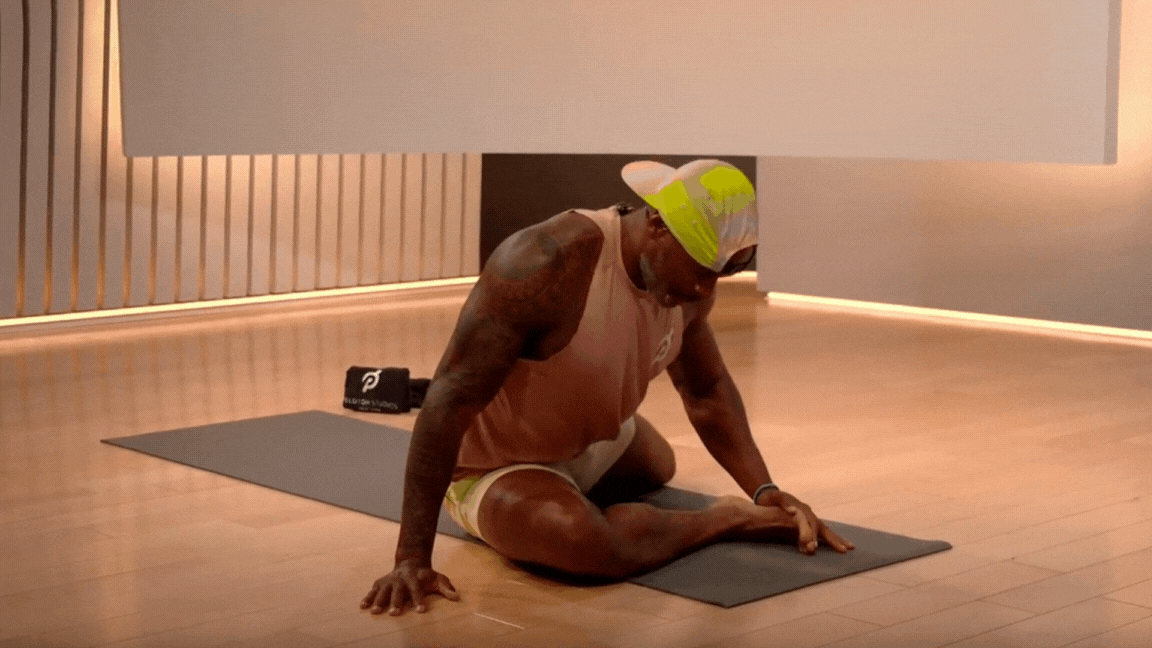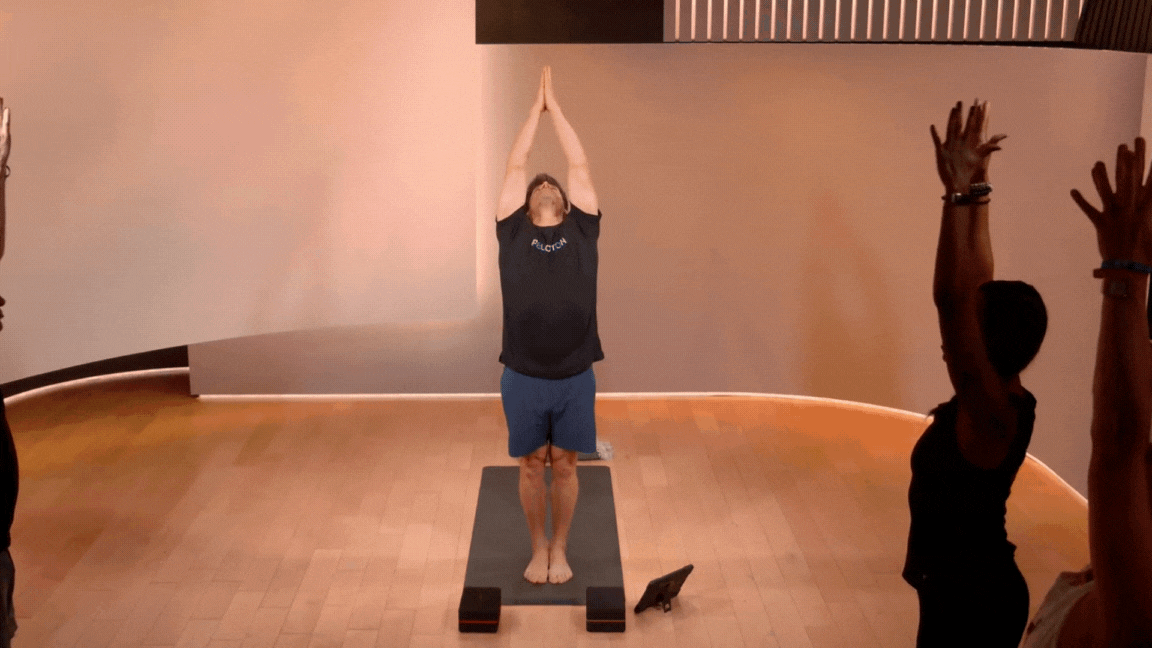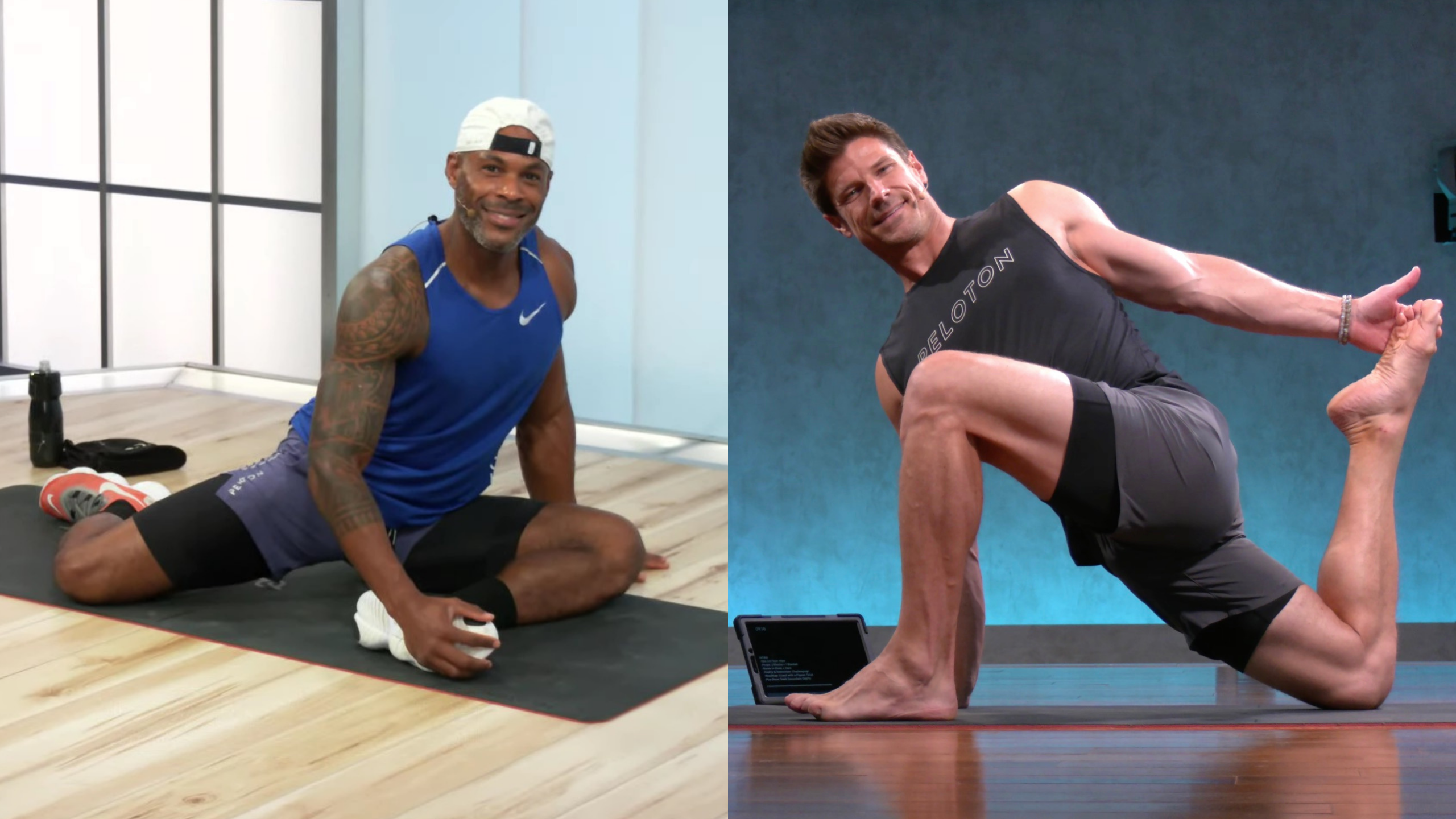What Is Flexibility?
Flexibility vs. Mobility
Why Is Flexibility Important?
How To Become More Flexible
How Long Does It Take To Become More Flexible?
You may be a boss on the bike and run like the wind on your treadmill, but if the very thought of doing full splits or backward bends leaves you quaking in your spinning shoes, rest assured, you aren't alone. Just hearing the word “flexibility” can conjure up images of contortionists wrapping their legs around their head, but the truth is that learning how to become more flexible is actually far less intimidating than it seems.
Anyone who's ever incorporated stretching or yoga into their workout routine knows that mastering the moves can help prevent injuries, improve your range of motion and boost your athletic performance. Here, Peloton instructors Adrian Williams and Denis Morton explain how to become more flexible, how flexibility is different from mobility, the benefits of flexibility, and more.
What Is Flexibility?
Flexibility refers to whether the connective tissues of your muscles can elongate throughout a range of motion—or, put more simply, how far they can stretch without causing pain or injury. Being flexible allows you to move comfortably throughout a full range of motion and supports you during everyday, functional movements, like bending over to tie your shoes to twisting around to see if there’s a car in the lane behind you.
If you’re inflexible, on the other hand, you’re limited in terms of how you can move, which can lead to injury, decreased athletic performance, and an inability to function independently as you age.
Flexibility vs. Mobility
A common misconception about flexibility is that it’s the same thing as mobility. It’s a little confusing, to be fair; in order to have great mobility, you do need to have some flexibility, and vice versa. And both have similar benefits: reduced risk of injury, better athletic performance, improved joint and muscular health, and corrected muscle imbalances.
Though the two are related, they’re two distinct principles of physical movement. While flexibility refers to your muscles’ ability to elongate temporarily, mobility is your ability to move your joint(s) through their full range of motion, with control and precision. For example, bending over to touch your toes is an example of flexibility, while rotating your arm in a circle tests the mobility of your shoulder socket.

Why Is Flexibility Important?
The benefits of flexibility go beyond dropping into the splits on a whim or being able to apply sunscreen to your own back (though, those a great!) Here’s why it’s important to learn how to become more flexible.
Reduced Risk of Injury
There are countless reasons to try a full-body stretch or yoga class, experts say. “Flexibility improves workouts and prevents injuries by strengthening under-active muscles and stretching over-active ones to reduce imbalance,” Denis says. “This allows us to withstand more physical stress, making us less likely to incur injuries during activity.”
Improved Athletic Performance
You'll also see big benefits in your overall performance. “For anyone who is an avid runner or does strength training, you are constantly working towards maintaining mobility which helps improve joint function,” Denis says. “Having your joints function properly improves balance, aids in flexibility and improves strength, making you an overall better athlete.”
Balanced Muscles
Muscular imbalance is one of the leading causes of injury, and stretching is an effective way to correct and prevent these mismatches. Here’s how it works: Often, one side of your muscles (like your hip flexors) is tighter than the other, causing your other muscle to overcompensate to account for the dip in performance and functionality. Over time, the less-tight muscle may get overused or face too much stress, leading to injury. Learning how to become more flexible is a way to balance your muscles out.
Plus, if you’re doing regular strength training, elongating your muscles through stretching helps counteract all the muscle contractions from moves like biceps curls, lunges, and squats. That way, your muscles have the optimal mix of tension and relaxation, priming you to train as hard as you want.
More Comfortable Daily Life
Let’s face it, living with tight muscles can be painful and frustrating. Regular stretching and flexibility training can reduce any pain you feel from overworked, underloved muscles—and in turn, you’ll find that everyday movements (like lifting a suitcase or twisting around in your chair) to be more comfortable.
How To Become More Flexible
Ready to start stretching? Here, we have expert advice from our Peloton instructors about how to become more flexible and how long it takes to become more flexible (hint: it doesn’t happen overnight).
Start With Small Goals
Try not to get discouraged if just touching your toes feels like a lofty goal right now. Our instructors promise you'll get there eventually. “The hardest part is always starting,” Adrian says. “I would start with something digestible and attainable.” For someone new to flexibility work, he recommends trying 15 to 20 minutes three to four times a week. “Once you feel confident,” he adds, “I would do seven days a week for 30 minutes a day. It should be reflective of your day-to-day life.”
Don’t have time for 30 minutes of stretching per day? Take advantage of shorter openings in your schedule to become more flexible. “I would recommend any of my 10-minute hip flows because the benefits are so obvious and encouraging, but there are lots of 10- to 20-minute stretch and beginner yoga flows you can do three to five times a week,” says Denis.
Make Sure Your Stretching Is Balanced
Rule of thumb: Whatever you stretch on one side of the body, you should stretch on the other side—especially if you want to become more flexible. Give your left and right side muscles plenty of love in order to maximize your results.
Similarly, make sure you’re stretching your upper body and your lower body. Even if you feel confident that your hamstrings and hips are nice and loose, it’s imperative that you maintain that flexibility with consistent stretching. Your future self will thank you.
Incorporate Stretching Into Your Pre- and Post-Workout Routines
Like professional athletes, Peloton instructors know the importance of stretching and how it relates to their own workout routines. To that end, they recommend adding five minutes before and after your workout dedicated to flexibility training. “Teaching yoga is the greatest gift, as far as staying balanced with cycling and other forms of training,” Denis says. “It forces me to stretch and flow on days I might otherwise not, giving me built-in consistency, which is half the battle!”
Prioritize Regular Stretching
Even if you can't take a yoga class or stretch every single day, try to remember that doing something is always better than nothing. “The best starting point is wherever you are today,” Denis says. So give yourself grace on days when you can't find time to work on your flexibility.
Adrian is also adamant about incorporating foam rolling, stretching and yoga into his own workout routine. “This may sound a little like overkill, but I roll and stretch every single day,” he says. “It’s become for me what you would consider your morning coffee. My flexibility work consists of two things: myofascial release and stretching. I've also become quite obsessed with Denis’ 'Reset' series. Learning to control your breath through the practice of yoga will help a great deal in your flexibility work. Yoga, yoga, yoga!”

How Long Does It Take To Become More Flexible?
Patience is essential. If you stretch regularly (think: three or four times a week for 10 to 15 minutes at a time), you can expect to feel more flexible in two to four weeks. So even if you don’t see immediate results, keep up your flexibility training.
Want to speed up the timeline? You can stretch more frequently if you want to see results faster; in fact, you can stretch every day if you enjoy it! You might also incorporate props to help, such as a yoga strap, blocks, or a bolster. These additions to your flexibility training can make certain stretches more comfortable so you can extend your hold durations for longer.
However, make sure you’re not over-stretching your muscles past their abilities and pushing them to the point of pain. A little discomfort is okay when stretching, but you shouldn’t feel sharp or stabbing pain. If you do, that’s a sign that you’ve pushed yourself too far, and it’s time to rest. In fact, going too far too fast is one of the most common stretching mistakes you can make.
“We live in this world where people want things right away,” Adrian says. “There's a quote that I love and always share: 'Never give up because great things take time.' It’s cliché but the journey is the most amazing part. With fitness, I always like to think there is no actual destination. It's like we’re on a never-ending backpacking trip. You may want to do different things along the way and that’s okay. Always leave room for yourself to flex, but also be kind to yourself.”
Ready to increase your flexibility? Try a yoga or full-body stretch class on the Peloton App!
